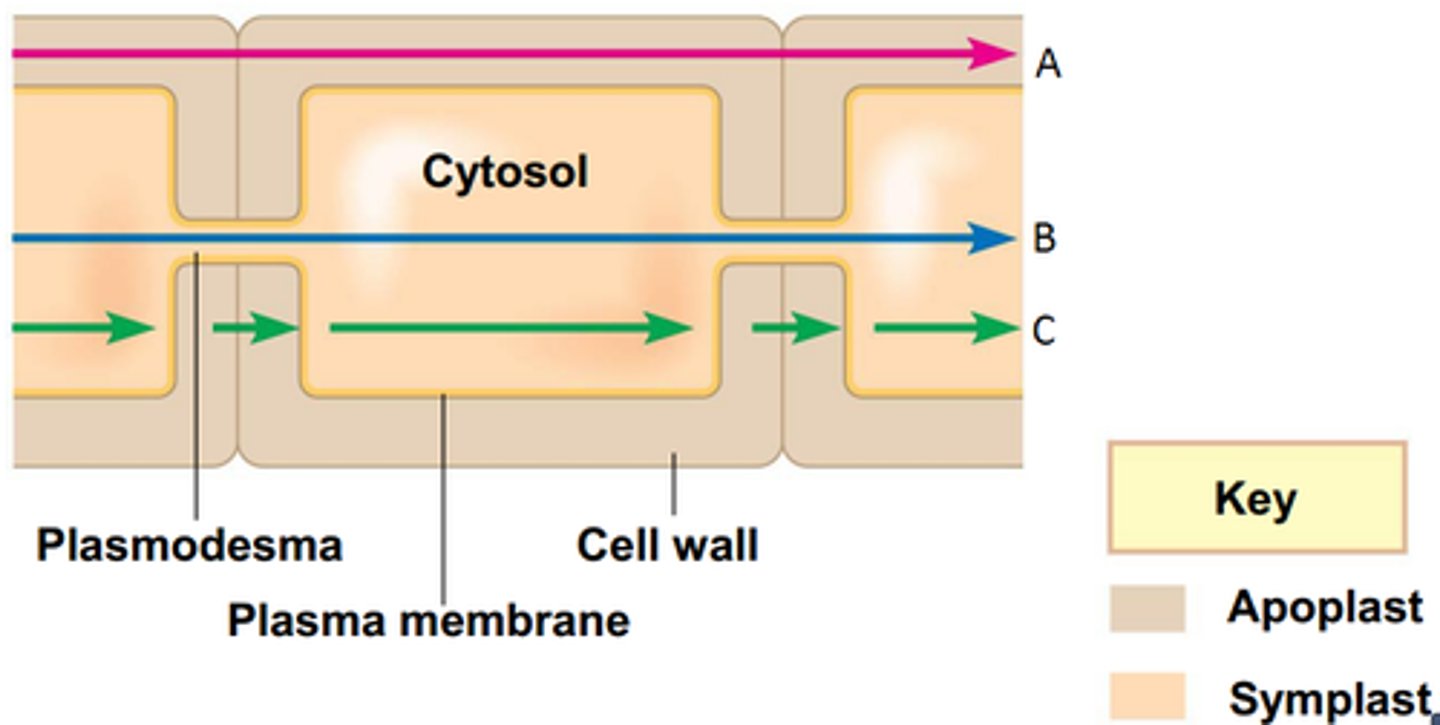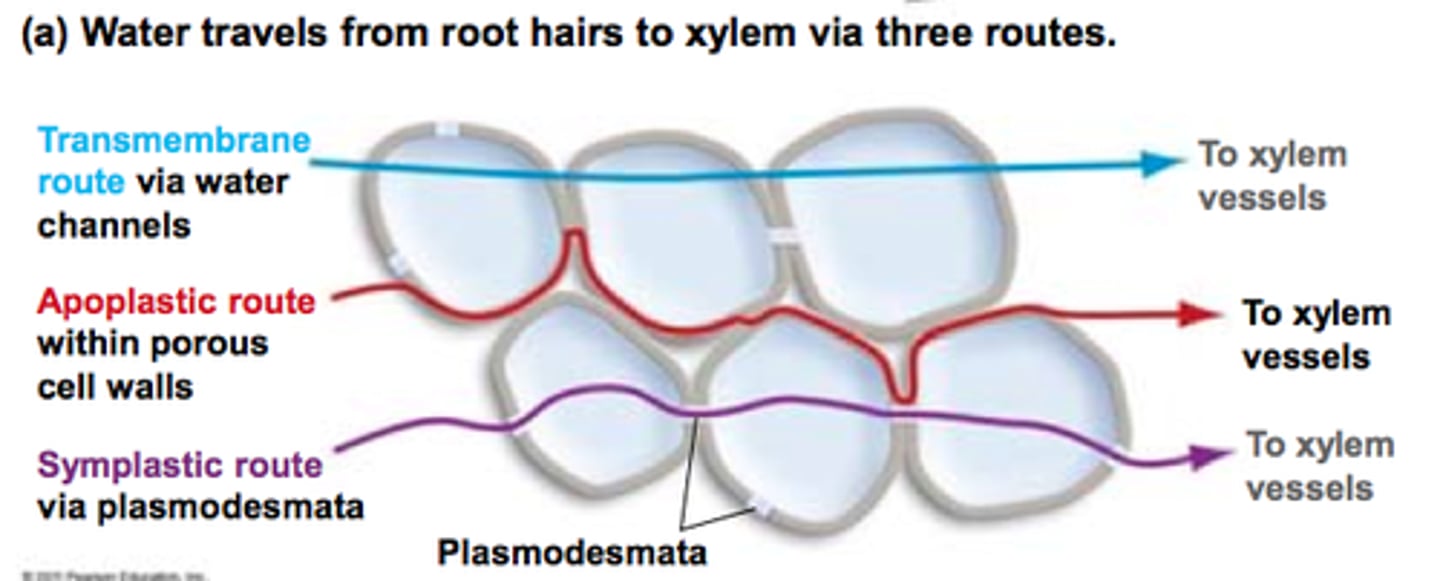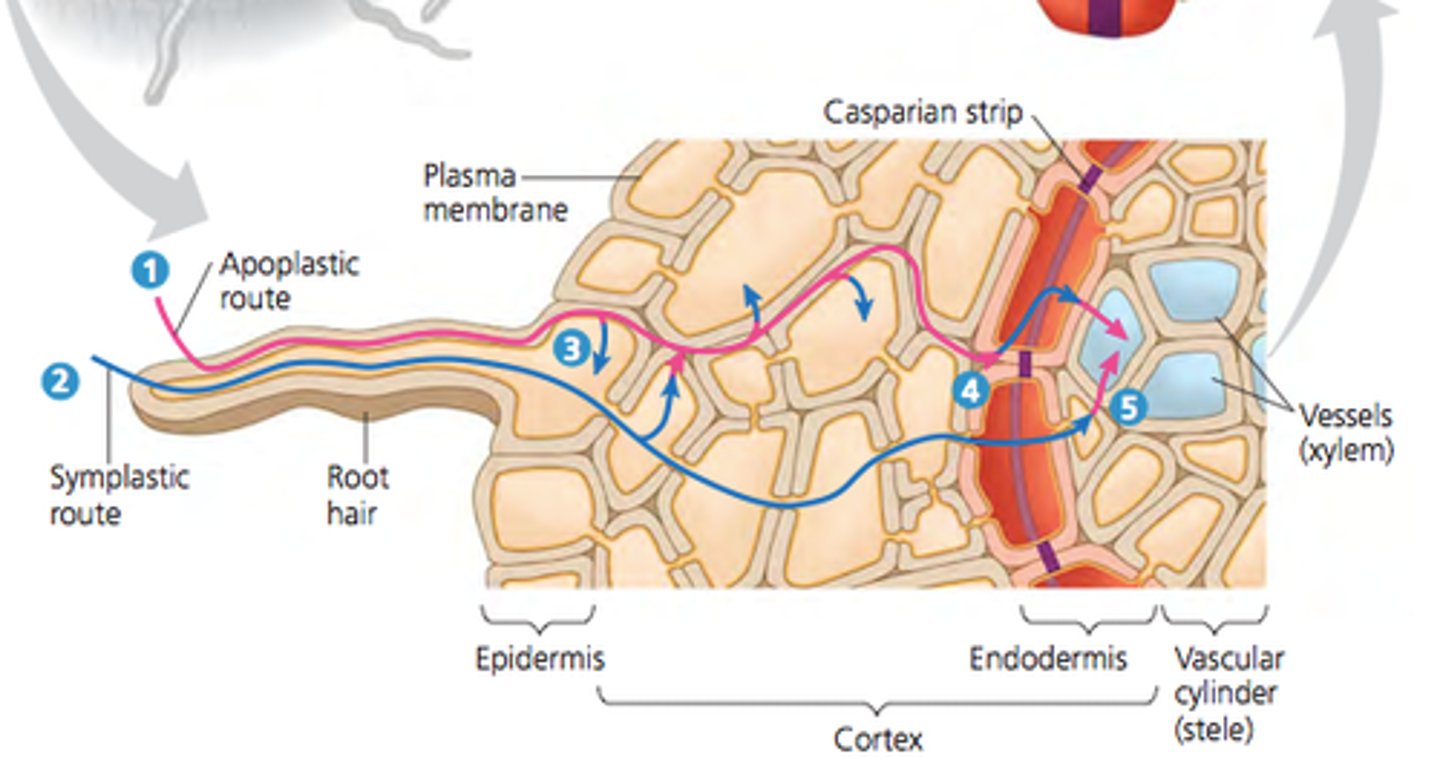Campbell Biology chapter 36
1/29
There's no tags or description
Looks like no tags are added yet.
Name | Mastery | Learn | Test | Matching | Spaced |
|---|
No study sessions yet.
30 Terms
Passive transport
The movement of substances across a cell membrane without the use of energy by the cell - diffusion
Active transport
transport of a substance (as a protein or drug) across a cell membrane against the concentration gradient
transport proteins
A transmembrane protein that helps a certain substance or class of closely related substances to cross the membrane. Those involved in passive transport do not require energy.
membrane potential
The charge difference between a cell's cytoplasm and the extracellular fluid, due to the differential distribution of ions. It affects the activity of excitable cells and the transmembrane movement of all charged substances.
Proton pumps
Use energy from ATP to pump protons out of the cell. This results in a proton gradient with a higher proton concentration outside the cell than inside. The inside of the cell also becomes negative in this process.
Involved in active transport, and co transport
cotransport
The coupling of the "downhill" diffusion of one substance to the "uphill" transport of another against its own concentration gradient.
Osmosis
net absorption or loss of water by a cell; diffusion of water
water potential
the physical property predicting the direction in which water will flow, governed by solute concentration and applied pressure.
flaccid cell
cell that lack water; is soft; causes plants to droop; closed stoma. If placed in higher solute concentration will undergo plasmolysis.
plasmolysis
when a cell is in a hypertonic environment, the cell will lose water to its surroundings, shrink, and its plasma membrane will pull away from the wall
turgid
Swollen or distended plant cells. (if it has a greater solute concentration than its surroundings, resulting in entry of water.)
wilting
The drooping of leaves and stems as a result of plant cells becoming flaccid.
apoplastic, symplastic and transmembrane.
3 major pathways of transport
apoplast
The continuum formed by cell walls, extracellular spaces, and the dead interiors of tracheids and vessels

symplast
the continuum of cytoplasm connected by plasmodesmata between cells.

Transmembrane route
water and solutes move out of one cell, across the cell wall and into the neighboring cell, requires repeated crossings on plasma membranes as substances exit one cell and enter the next
Apoplastic route
transport of water and solutes through cell walls and extracellular spaces

Symplastic route
path of least resistance: travel through cytosol by way of plasmodesmata. Requires only one crossing of a plasma membrane.
in roots;
when minerals reach the endodermis they continue through the plasmodesmata of endodermal cells and pass into the stele.
bulk flow
The movement of a fluid due to a difference in pressure between two locations. Used for long distance transport through xylem and phloem.
xylem sap
The dilute solution of water and dissolved minerals carried through vessels and tracheids.
guttation
due to root pressure, droplets of water appear in the morning on the leaf tips of some herbaceous leaves
root pressure
accumulation of minerals in the vascular cylinder lowers the water potential there, generating a positive pressure, pushes xylem up
Transpirational pull
the main phenomenon driving the flow of water in the xylem tissues of large plants.
It results ultimately from the evaporation of water from the surfaces of cells in the interior of the leaves (negative potential). It depends on water adhesion, cohersion and surface tension.
Light, Co2 depletion, internal clock in guard cells
3 cues that contribute to stomatal opening at dawn
stomatal opening
Correlates with active transport of H+ out of the guard cell.
The resulting membrane potential drives K+ into the cell through specific membrane channels.
The absorption of K+ causes the water potential to become more negative within the guard cells, and the cells become more turgid as water enters by osmosis.
phloem sap
a mixture of sugar, nutrients, and water that flows through phloem vessels in a plant
Translocation
The process by which organic substances (sugars) move through the phloem of a plant - from mature leaves to lower parts of the plant and roots.
positive pressure, always move from source to sink
Sugar source
A plant organ in which sugar is being produced by either photosynthesis or the breakdown of starch. Mature leaves are the primary sugar sources of plants.
loaded by active transport
Sugar sink
A plant organ that is a net consumer or storer of sugar. Growing roots, shoot tips, stems, and fruits are examples
sugar transport
requires active transport because sucrose is more concentrated in sieve-tube elements and companion cells than in mesophyll.
for loading only; moved by positive transport